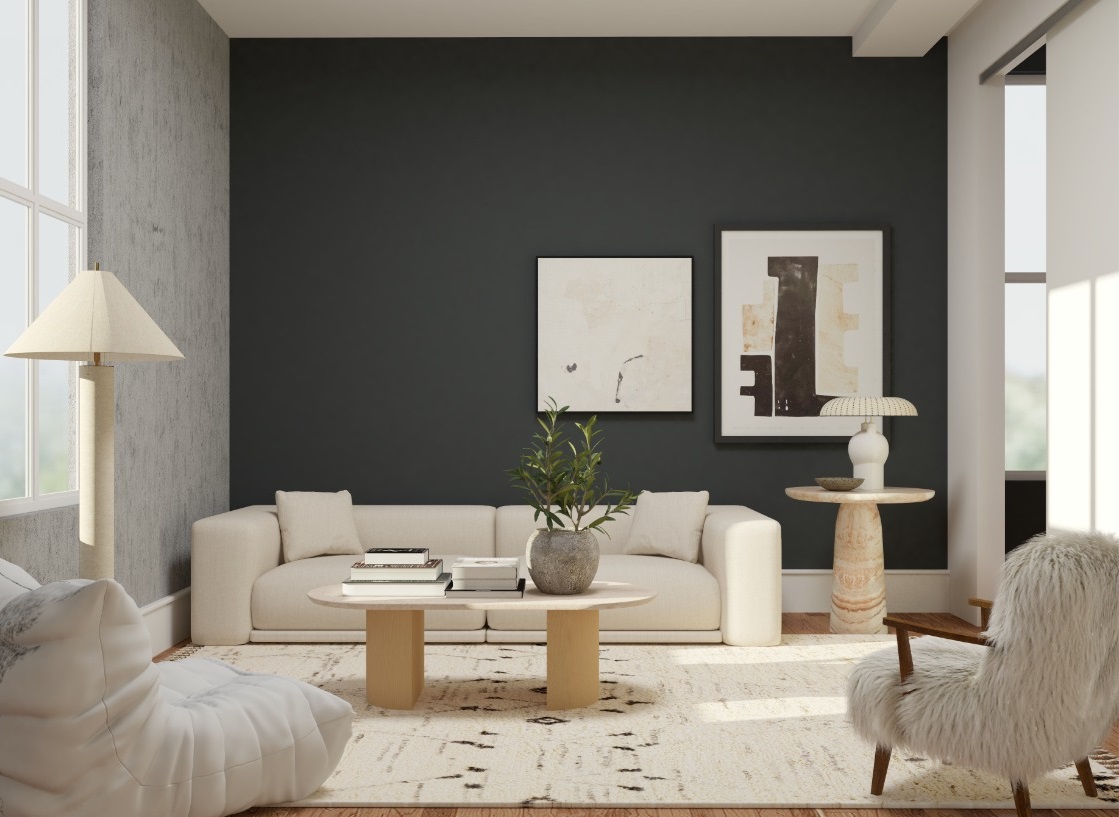When it comes to furnishings, we quickly get lost in decorations and accessories and tend to overindulge. With a minimalist interior, you can do it without a lot – and still feel like you haven’t missed a thing. The minimalist style is becoming increasingly popular due to the trend towards more environmentally friendly living. Therefore, our living experts will tell you how to design your living room minimally – without sacrificing style or comfort. Be inspired!
How do I furnish my apartment in a minimalist way?
Minimalism means, first of all, living according to the motto less is more. You reduce your wardrobe, apartment, and other areas of your life to the essentials, creating space for the things that matter most. So this kind of attitude to life helps us clear our minds. At the same time, functionality, high-quality materials, a calm atmosphere and reduced forms are the focus of minimalist furniture.
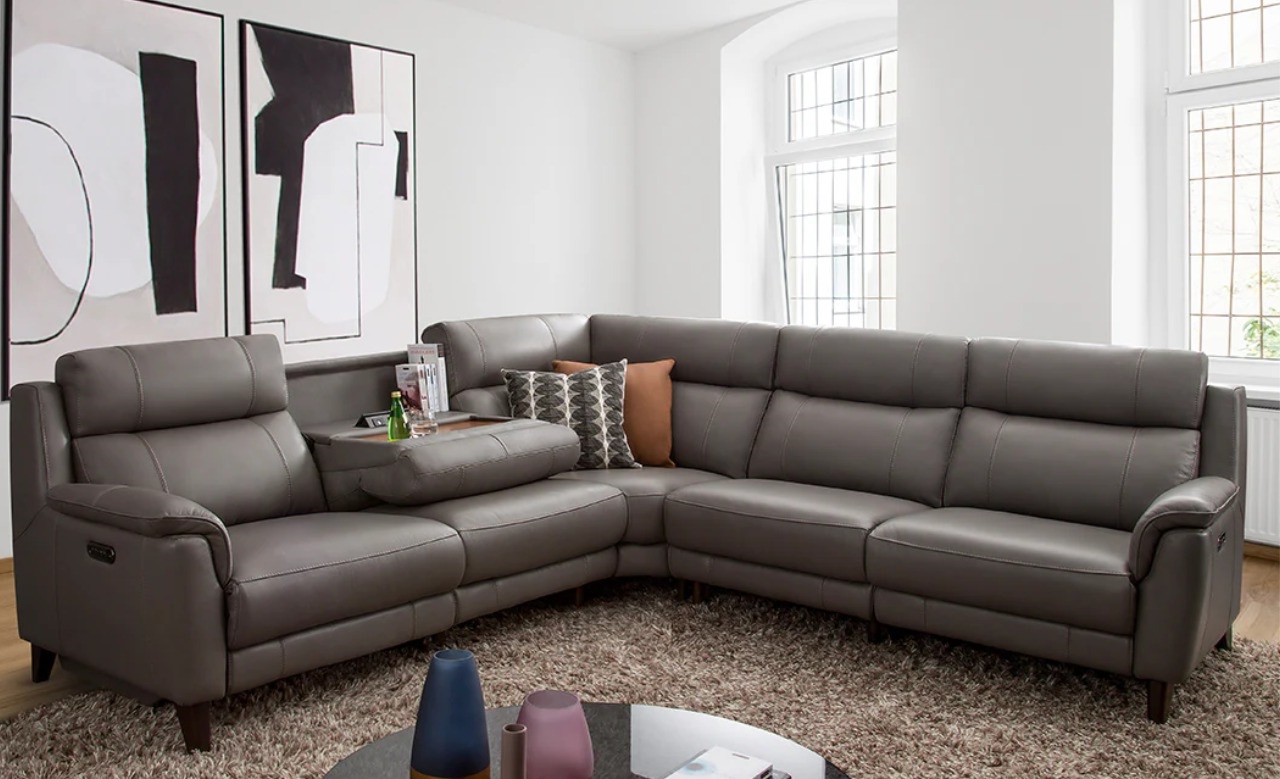
It is essential to clean and sanitize the room regularly. Everything that is not needed or loved should be thrown away. Have you seen the empty and uncomfortable room in front of you? No, it doesn’t have to be! Even though a minimalist living room is not full of objects, it is comfortable with on-point, beautiful decoration, cosy textiles, etc.
Tip 1: Modern furniture for a minimalist living room
Precise shapes and restrained colours create a minimalist look. Therefore, you should also choose furniture that suits the rest of the atmosphere. Apart from design, function is also essential in a minimalist home. Thus, multifunctional furniture can be used to suit your living room. Apart from wood, metal, in particular, is often presented as a modern material.
In addition to a sofa and coffee table, a simple sideboard with doors is also suitable. However, it’s better to avoid fancy wall units and hang the television on the wall. Or, you can stop watching TV entirely and rely on a projector. This credo applies to all furniture: quality over quantity! So, pay attention to quality materials so that your favourite items last a long time.
Tip 2: Minimalist lighting
Comfort can be brought to a minimalist living room not only with well-chosen decoration and beautiful furniture. Proper lighting also contributes a lot to the atmosphere. Warm light and many indirect light sources create a comfortable oasis of well-being. To maintain the minimalist character of the furniture, lamps made of metal, wood or linen are perfect. Bright ceiling lights are best combined with tables, floors, walls, or candles.

Tip 3: Minimalist white living room
White is still very popular, combined with minimalist living rooms. Because the puristic style prefers to contain fewer colours than more, this creates an overall calm and relaxed feel to your home. In the white living room, you can really relax and unwind. You can find out how to keep it looking comfortable in our video!
Tip 4: More colour for a minimalist lifestyle
Of course, your living room doesn’t have to be decorated entirely in white! Other calm colours also harmonize perfectly with minimalism. These include black, grey, beige, and various natural colours, such as shades of brown. In principle, all calm colours that do not distract you from important things are suitable. Of course, you can still create your contrast in stronger colours if you wish, ideally with individual home accessories.
Tip 5: Decoration ideas for your minimalist living room
Home accessories, whether on the wall or in a drawer, are responsible for the comfort of the room. Since they have no function, they are best used sparingly in a minimalist style. So, relying on one stylish statement piece rather than several small decorative elements is better. Cosy pillows, blankets, and feathers, which symbolize ultimate comfort, are also welcome.
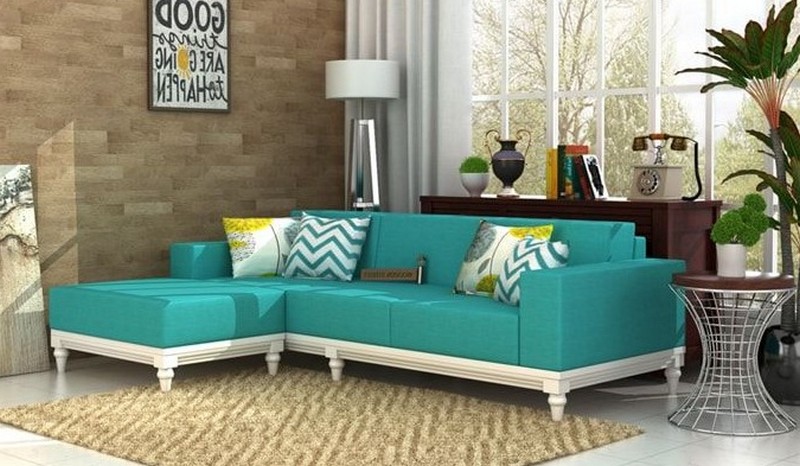
So, which decoration is best for your minimalist living room?
Personal memorabilia: Family photos on the wall or a beloved vase from your last vacation—in a minimalist style, it can be individual. Because what you love can stay in the room!
Comfortable textiles: Very comfortable! Decorative pillows and blankets will make your living room more comfortable. Make sure not to choose wild patterns or bright colours.
Individual decorative highlights: Whether they are original designer pieces or eye-catching ones, individual decorative accessories can also stand out in your minimalist living room.
Tip 6: Make the walls minimalist
Likewise, with wall decorations in your living room, walls should never be overcrowded—either with shelves or an art gallery. Choosing a lovely, large picture in a simple frame is better. Wall paint is also an ideal alternative, ideally in natural, calm colours such as sand or cream. Lime colour is equally popular. However, it’s best to avoid colourful floral wallpaper!
Tip 7: Natural materials for your minimalist living room
Various natural materials also make your living room more comfortable. For example, combine a simple coffee table or wooden console. Decorative pillows made of linen or cotton provide the same effect. Another style highlight: delicate ceramic vases.
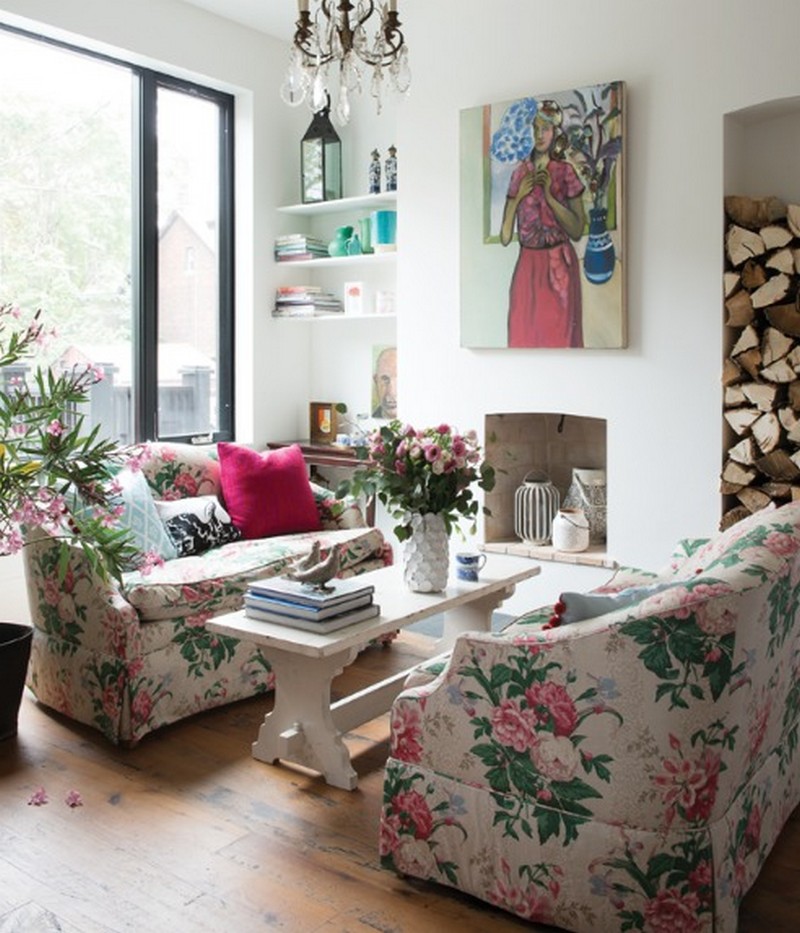
Tip 8: Combine minimalist and hyggelig Scandi style in your living room
Decorating in a minimalist style doesn’t mean the room has to be sterile and empty. Quite the opposite! Because with the right accessories, even a minimalist living room will look warm and inviting. The Nordic lifestyle, which is based on minimalist principles, is ideal for comfort:
Hygge: With the Danish formula for happiness, everything can be very comfortable. Lots of candles, (artificial) fur and warm colours create a cosy atmosphere.
Lagom: With Swedish lagom, finding a middle ground is essential. It shouldn’t be too much or too little, but just right. But sometimes, it’s not that easy!
Scandi: The signature Scandi chic style is still trendy. This style features light wood, graphic patterns, and many straight lines.
Tip 9: Create enough storage space
Storage space is essential for a clean and tidy appearance. So make sure to use a chest of drawers with a closed front. A coffee table or bench with storage space where blankets, toys, etc. can be lost is also practical. You should at least keep open shelves harmoniously and in moderation. Small baskets or boxes also ensure more orders.
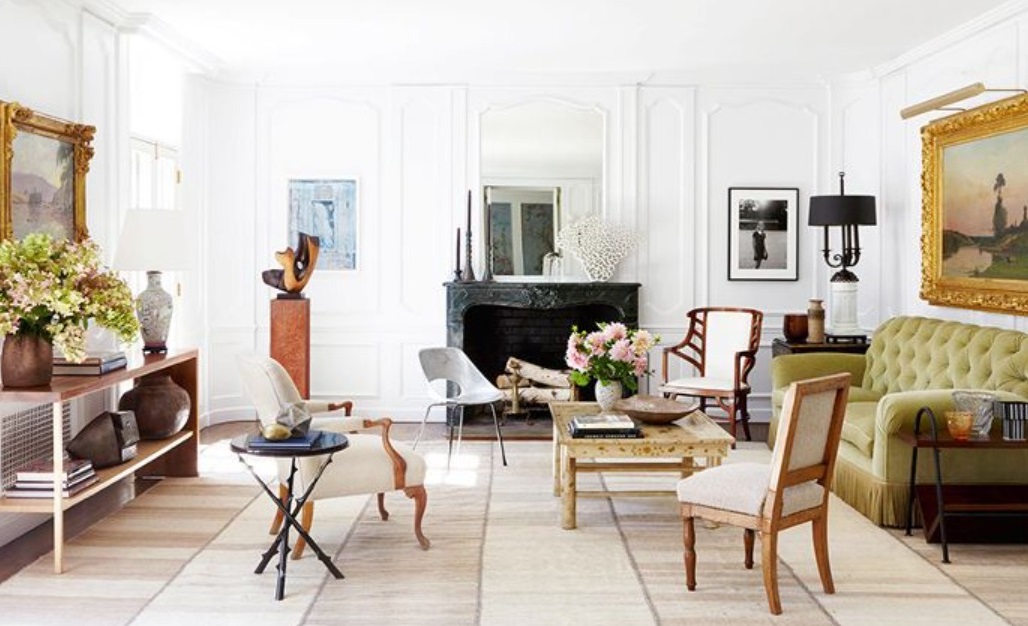
Tip 10: Leave the floor free
Have you considered our previous tips? Then this will be easy for you: clean up everything scattered on the floor! Whether it’s magazines, books or other small items – leave the floor free and create more space for yourself. Oh yes, carpets don’t always have to be in a minimalist living room!
A Brief History Of Minimalism
In the middle of the 20th century, the aftermath of war led to a strong desire for goods. Previously, people lived with limited supplies and choices, even for everyday needs. As consumerism expanded, maximalism reached its peak. However, this trend was not solely influenced by the global financial situation. The advancement of infrastructure, which facilitated access to new materials such as steel, glass, and concrete, also played a significant role.
However, it is widely accepted that the Minimalism movement has its origins in the 1960s and 1970s. Artists started to prefer simple geometric shapes and lines, direct and objective meanings, moving away from Abstract Expressionism and its excessive layers. This minimalist trend permeated not only the world of painting and sculpture but also architecture, product design, and eventually interior design and lifestyle.
The focus on the essential in art can be traced back to 1915, when Russian painter Kasimir Malevich created a composition of black squares on a white background – a minimalist work that embodied simplicity. Over time, influential professionals have increasingly favored art that is self-referential, demonstrating a straightforward approach and stripping away anything that seems unnecessary.
THE PHILOSOPHY OF MINIMALISM
Contrary to common belief, minimalism is not about scarcity or giving up. Instead, minimalism emphasizes quality over quantity. Minimalists are careful in their selection of items, ensuring that everything they own has a purpose and enhances their experience. Japanese organizing consultant Marie Kondo illustrates this by advocating decluttering and attributing meaning to personal belongings.
Minimalism is also about being deliberate, eliminating distractions, and making mindful choices. Minimalism advocates for the value of experiences over possessions, placing a higher importance on items that have meaning rather than items that simply take up space. A minimalist lifestyle involves an internal focus, seeking personal harmony before external approval. It is a mindset, not a strict set of rules.
A minimalist approach may seem challenging in a world filled with purchasing options. However, embracing such a lifestyle can lead to increased self-esteem, focus, and reduced stress. Importantly, minimalism is not about choosing the cheaper option but making informed, valuable purchases that serve a purpose.
In essence, minimalism encourages thoughtful decision-making about possessions, time, energy, and relationships. Minimalists are genuine, valuing simplicity and rejecting superficial mass consumerism. They strive to emphasize the true beauty, essence, and purpose of the things in their lives. As American spiritual teacher Vernon Howard expressed, “You have made it in life when all you want is what you really need”. This perspective is very much aligned with the Scandinavian way of life, potentially contributing to the fact that Danes are often ranked among the happiest nations.
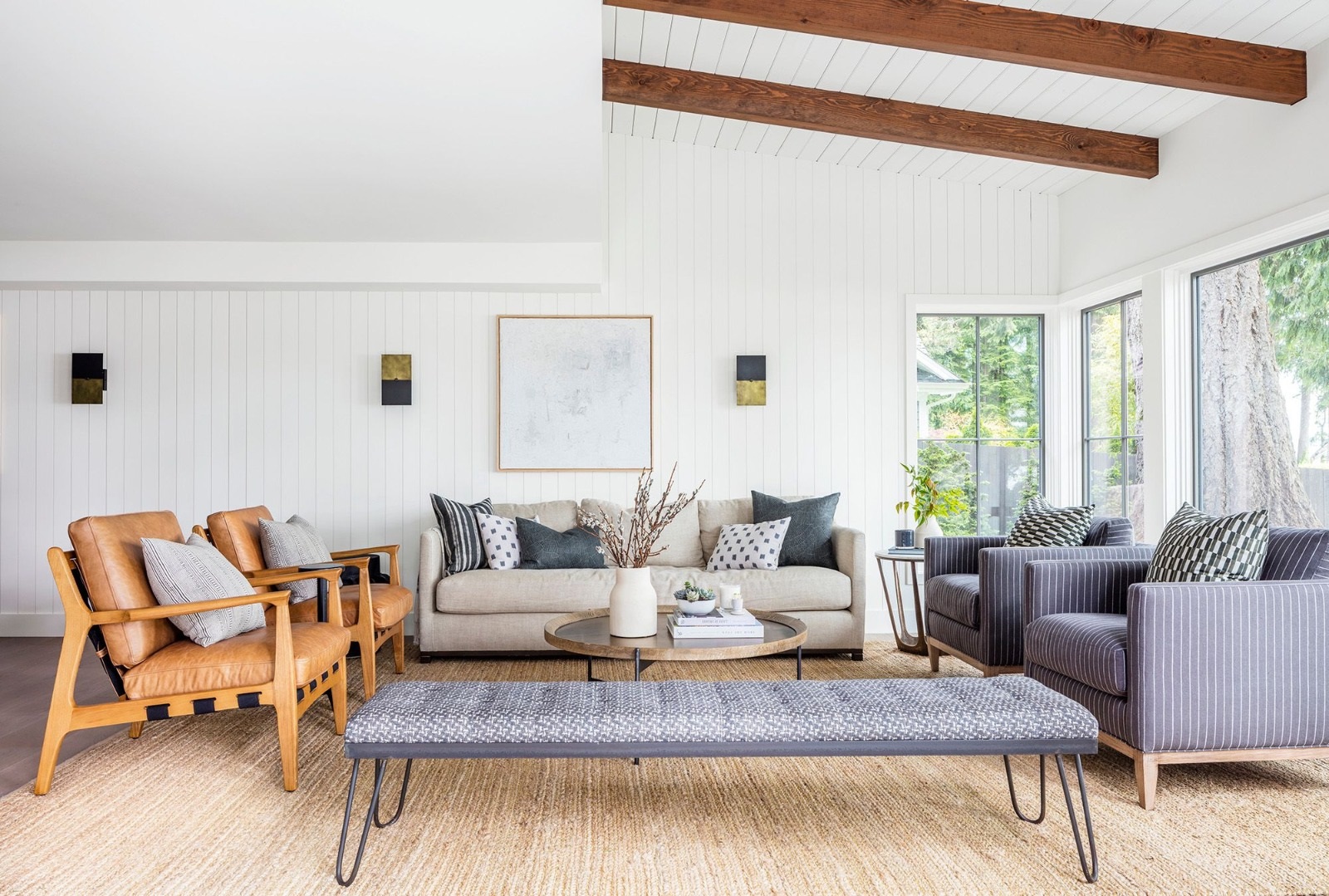
Choosing Minimalist Living Room Furniture
Even though the living room space is limited, it does not mean that comfort and style must be compromised. By selecting the appropriate furniture, you can convert a small living room into a cozy and functional space. Here are 10 tips for selecting minimalist living room furniture in a house with limited space.
1. Give Priority to Functionality
Select multifunctional furniture that can serve more than one purpose. For instance, an ottoman or footrest chair. This chair can function as an extra seat when needed. For a coffee table, choose one that can also be used as a work desk.
2. Tailor the Furniture to the Size of the Living Room
One effective method to arrange a minimalist living room is to choose furniture that fits the size of the space. This step is crucial to prevent the living room from feeling cramped or cluttered. Utilizing large furniture actually makes the space feel narrower, creating the illusion of tightness in the living room.
If you need to use larger furniture, it’s advisable to minimize the number of pieces in the living room. This is done to avoid making the living room feel cramped, making it appear more spacious. Additionally, it’s recommended to work with multifunctional furniture that is well-suited for limited space.
For instance, you can opt for a table with storage space underneath as one of the newest minimalist living room design ideas. This way, you won’t have to worry about the living room looking cluttered because you can store items under the table. This is definitely effective in organizing the room while also saving money.
In addition to a versatile table, you can also utilize a bookshelf as a partition between the living room and family room. Interestingly, using this bookshelf ensures privacy for you and your family in the adjacent room. Be sure to incorporate a variety of versatile furniture to make arranging the living room easier and more efficient.
3. Utilize Built-In Cabinets and Shelves
Built-in cabinets can seamlessly blend with the walls, maximizing storage space in your living room. By combining shelves, drawers, and cabinets, you can fulfill your storage needs more efficiently and comprehensively.
Select furniture with concealed storage space such as a coffee table or sofa with additional drawers. This allows you to neatly store items such as blankets, pillows, or toys, maintaining a clean and organized living room appearance.
4. Opt for the Right Furniture Shape
Choose furniture with slim and tall legs, as this type of furniture will create an open and spacious room impression. Avoid furniture with thick or curved legs that can occupy a lot of space in the room.
Furthermore, choose furniture with a simple and compact shape. Refrain from furniture with intricate details or excessive decorations. It’s better to opt for furniture with a simple design and clean lines to achieve a minimalist yet elegant living room look.
5. Use a Two-Seater Sofa or Sofa Bed
If your living room space is limited, consider selecting a two-seater sofa or sofa bed that can serve as additional seating and an extra bed for overnight guests. By employing this method, your living room will remain functional and comfortable despite the limited space.
6. Steer Clear of Textured Furniture
Furniture with texture can create a darker and narrower appearance in a room as it absorbs light. It’s preferable to choose furniture with a smooth surface that can reflect light, making the room feel brighter and more spacious.
If you want to introduce some texture to the living room, you can opt for one piece of furniture with a prominent texture as a statement. For instance, you can introduce a carpet with a unique texture or a blanket with an interesting pattern to add some variety to the room’s decor.
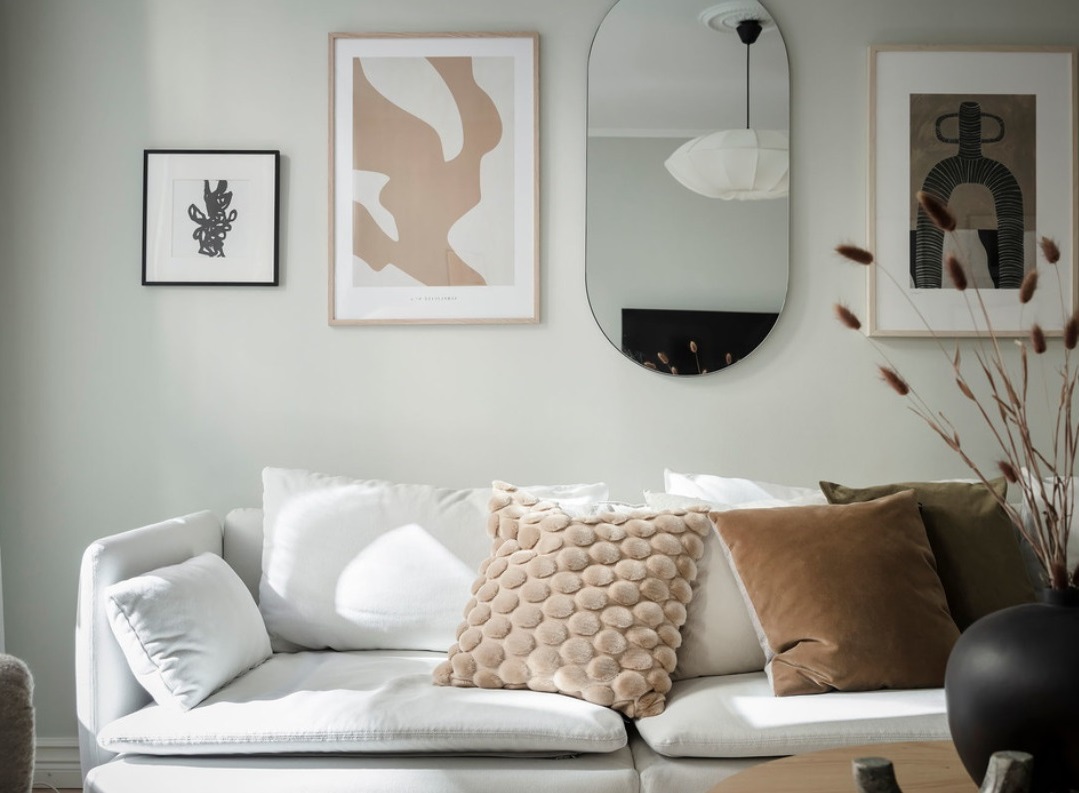
7. Embrace Bright and Coordinated Colors
As one of the rooms that leaves the first impression of a residence, maintaining the cleanliness and aesthetics of the living room is crucial. It’s advisable to incorporate various furniture pieces in bright and coordinated colors. This is because the use of furniture with large patterned colors can be disruptive and uncomfortable for the eyes.
With this minimalist living room design tip, you’ll not only have an aesthetically pleasing home but also create a comfortable space. Especially if the visiting guests appreciate aesthetic spaces, your living room will undoubtedly be one of the dream places that can amaze them.
Opting for furniture and painting the walls in bright colors such as white, cream, light gray, or pastel can make the room appear more spacious and fresh. These colors help establish a bright and welcoming atmosphere in the living room.
Additionally, consider employing a monochromatic color scheme. By incorporating various shades of the same color, such as different shades of white or gray, you can achieve a harmonious and cohesive room appearance.
8. Identifying the main focus of the room and considering the lighting are effective and aesthetically pleasing ways to organize a minimalist living room. This is crucial for arranging the furniture. For instance, positioning the table in a spot that immediately catches the guests’ attention upon entering the room, followed by other furniture.
In addition to the room’s focal point, valuable tips for arranging a minimalist living room also involve paying attention to the lighting. You can achieve this by incorporating large windows to allow natural light in, and complementing them with various room lights. Each light source provides a distinct ambiance, such as placing a floor lamp next to the sofa to create a cozy atmosphere.
Moreover, the use of large windows not only brightens and warms up the living room but also enhances its aesthetics. This is because large windows can showcase beautiful outdoor views. Furthermore, these windows are highly recommended for creating an illusion of spaciousness in the living room.
9. Opt for versatile furniture that can serve multiple purposes in your living room. For example, consider shelves that can store books and double as a place for children’s toys.
Additionally, chairs with storage drawers underneath can offer extra seating and also serve as storage for small items like blankets or magazines. By selecting multifunctional furniture like this, you can maximize the use of your living room without overcrowding it with various pieces of furniture.
10. Make use of wall space by installing wall shelves or cabinets to add storage without occupying a large floor area. With wall shelves, you can arrange decorative plants, figurines, or photo frames to enhance the visual appeal of your living room.
Furthermore, incorporate large mirrors to reflect incoming light and create a brighter, more spacious feel in the room. Your living room will appear larger and more inviting without the need for additional furniture.
An efficient and visually appealing minimalist living room layout involves placing a round mirror or a large mirror. It’s undeniable that many modern homes have embraced the use of round mirrors on each wall. This is because mirrors not only align with current trends, such as the mirror selfie trend, but also effectively create a sense of spaciousness in the living room.
In this context, the optical illusion created by the mirror, which reflects the small living room, significantly contributes to making it appear slightly wider. Even the use of round mirrors on the walls or above the cabinets adds charm to the living room. Therefore, ensure to position the mirrors in well-lit areas to maximize their reflective effect.
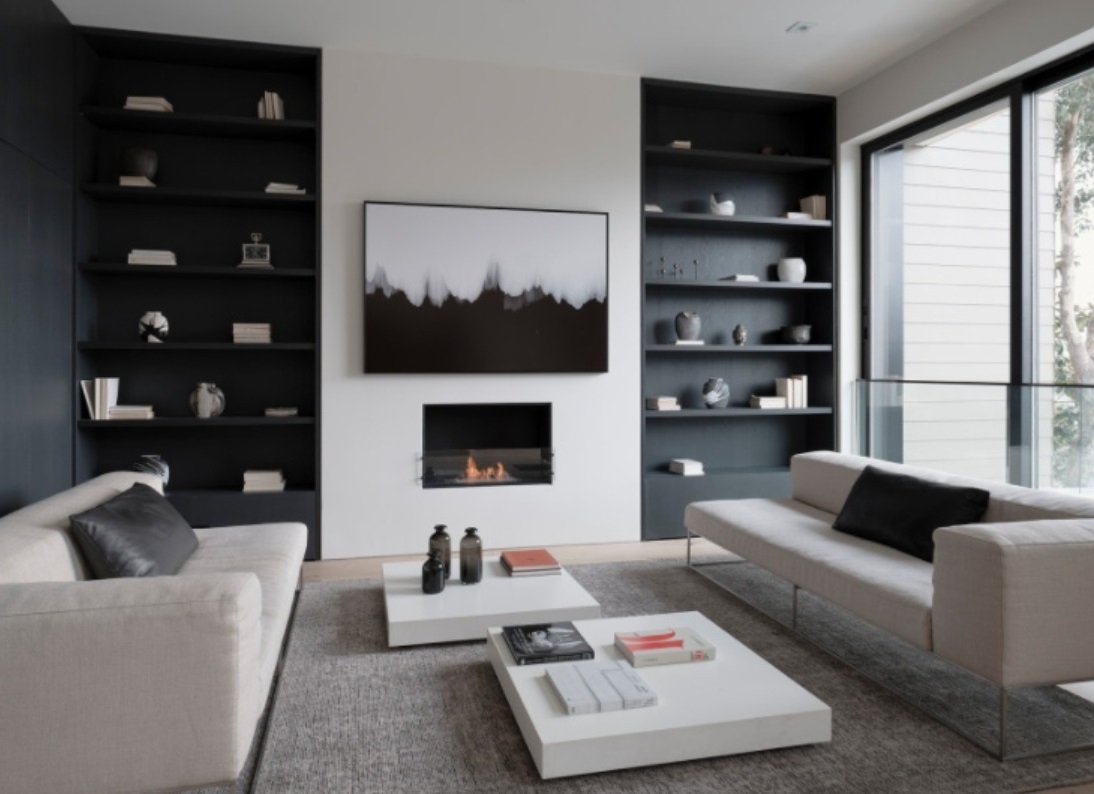
11. In addition to installing round mirrors, the most effective and aesthetically pleasing minimalist living room layout tip is to add wall decorations. An empty living room wall devoid of decorations will not look aesthetically pleasing or beautiful. However, it’s important to not just hang any decorations but to ensure they are of an appropriate size.
Decorations that are too small will not have a significant impact on the living room. Therefore, consider installing decorations or paintings that are at least 2/3 the size of the living room sofa. If the decorations that need to be hung are too small, use a large frame with striking colors to draw attention.
First, when choosing decorations for the living room walls, it’s best to opt for affordable options. There are plenty of inexpensive art decorations available that can be used to beautify small living rooms. When installing these decorations, select a spot on the living room wall that is open, spacious, and well-lit to ensure that they are clearly visible.
In addition to implementing the top minimalist living room layout suggestions, don’t hesitate to get creative with paper. Cut the paper into pieces to fit the shape and size of all the frames. After experimenting with several frames, you can use them to add a unique and interesting touch to the room.
12. Leave Space Between Furniture and Walls
Another unique, effective, and aesthetically pleasing minimalist living room layout tip is to create space between the furniture and the walls. Although this may seem counterintuitive, this space creates the illusion of a larger living room. Therefore, ensure that the furniture is not directly against the walls to create a more spacious feel.
To make use of the wall space, consider turning it into a storage area. By having storage on the wall, you won’t need to worry about cluttering up the closet with various accessories or items. It’s a simple method—just add shelves with the capacity you need and install them on the living room wall.
13. Opt for a Soft Floor Carpet
Another effective and aesthetically pleasing minimalist living room layout tip is to use a soft floor carpet. Having floor carpets in the living room is essential for creating a softer and warmer ambiance. Using carpets has been proven to enhance the home’s beauty and protect the floor from damage.
When choosing a carpet, make sure it’s the right size and doesn’t cover more than 50% of the floor area. This is crucial to maintain the beauty of the vinyl or flooring. In addition to selecting soft materials, opt for a carpet with a contemporary color and pattern that complements the overall theme of the living room.
14. Make the Most of Empty Space
Lastly, another effective and aesthetically pleasing minimalist living room layout tip is to maximize empty space. It’s true that everyone should be skilled at arranging a minimalist living room. For instance, you can convert the empty space under the stairs into a multi-purpose storage area.
It’s quite simple to do this—just place a minimalist shelf that fits the size of the space under the stairs. This way, you can use it to store various accessories or items, such as small items, decorative plants, book collections, bags, shoes, and clothing, or any other collections of items.
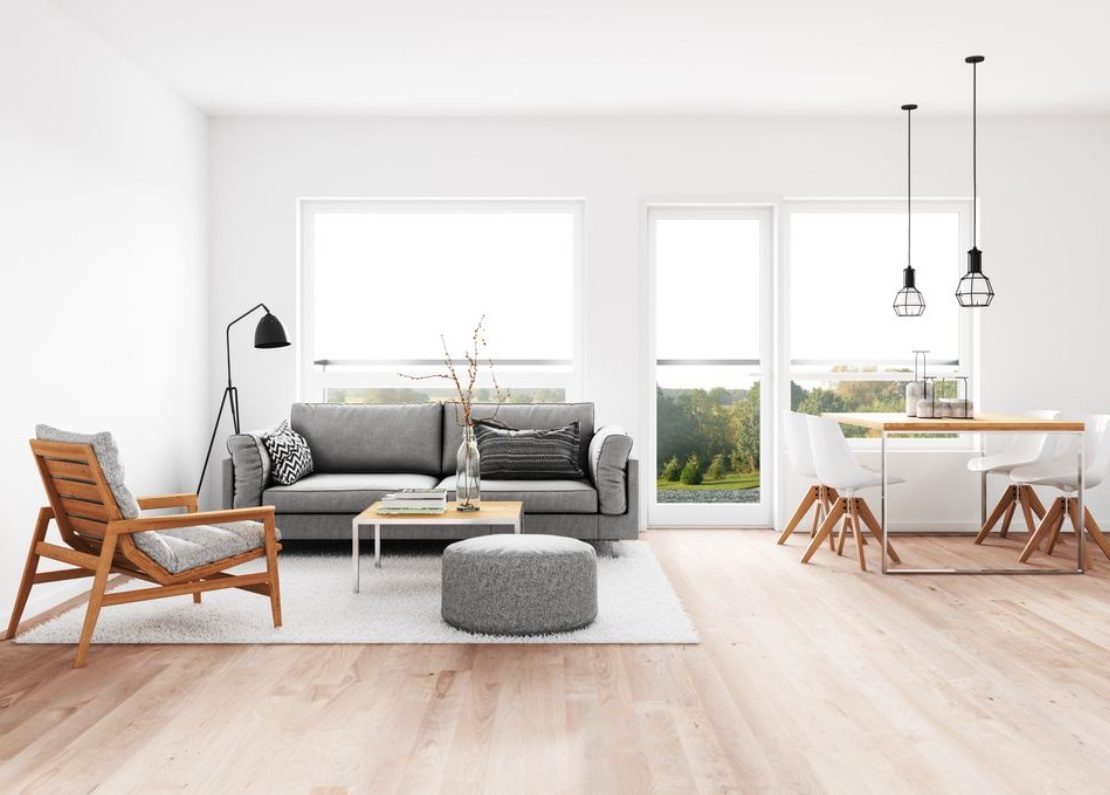
These are some minimalist living room layout tips that can help create a more spacious, comfortable, and attractive room. Be sure to choose tips that match the living room’s condition to ensure they suit the residence. These ideas can also be adjusted to better reflect the preferences of the occupants.
